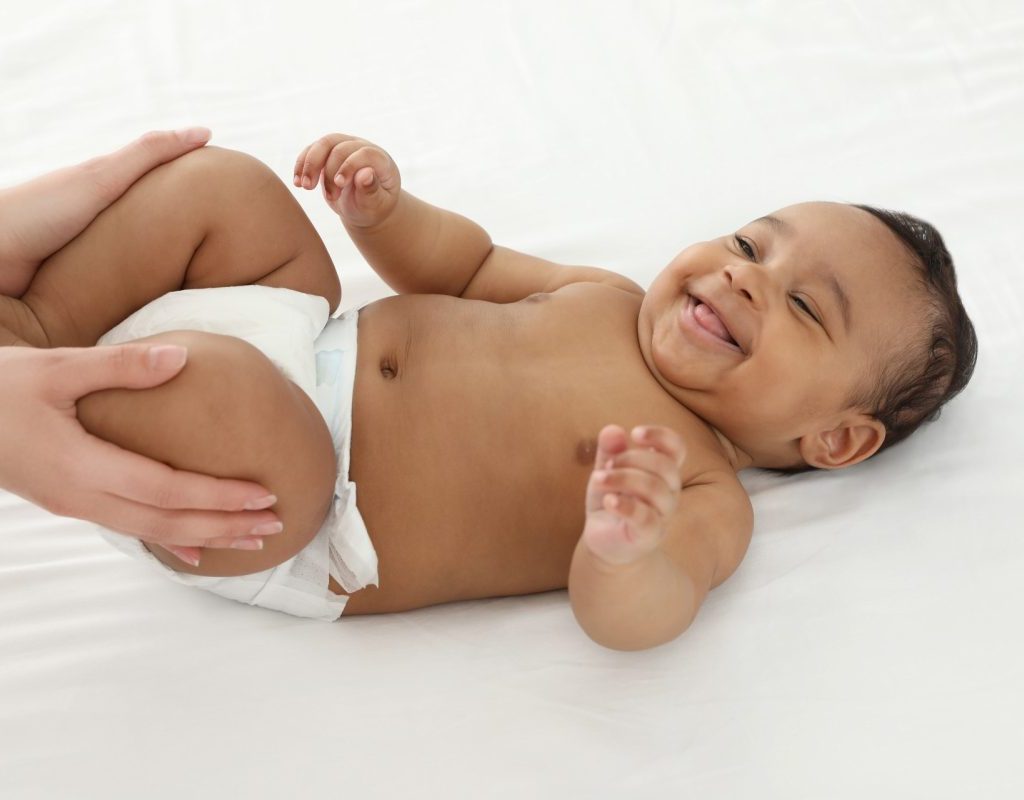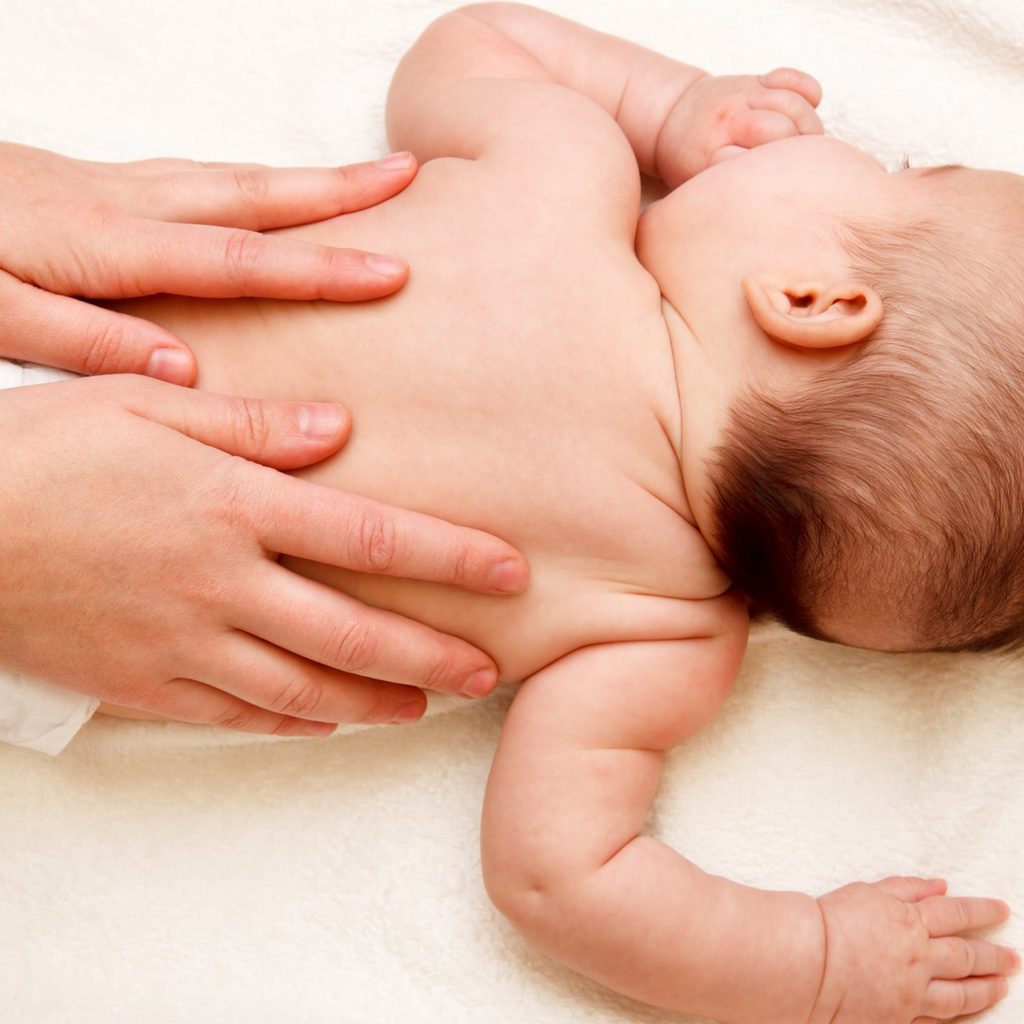Massage is a wonderful tool for relieving pressure, stressors, tension, and pain. It’s also an equally therapeutic and quick tool that aides in the de-escalation of mental and physical pain — including anxiety. Additionally, massage has also been used for many years in the medical field — both Eastern and Western –as a form of injury-centered healing techniques under the direction of doctors, and physical and occupational therapists.
But how do you massage a baby? Could something like that be safe? And how would you go about performing it? We’re here to answer all those questions — and more — while also providing encouragement to new parents like yourself to consider adding baby massage to your infant’s routine. By doing so, you may find yourself caring for a calmer — and in some cases happier — baby while also building a bond of safety and serenity with them.

The benefits of infant massage
Whether the idea of massaging your baby is a new concept or you’ve heard talk of it but aren’t sure of the details, let’s review the basics of why parents across the country — and the world — have been utilizing this technique. We’ll also give instructions for how to massage a baby.
It soothes and calms your baby. Massaging a fussing infant can not only diffuse their frustrations, but it can also de-stress the parent caring for them as well. The human touch — especially when received by a parent — can deescalate a tense situation or feeling almost immediately in some cases. As humans, we crave the touch of others, and that instinctual desire to physically connect with others begins in the womb. It’s important to be in tune with your baby’s needs, however. (Never attempt to massage your baby if they are overstimulated, or ill.)
Massage aids in digestion. When giving an infant a massage, especially ones that include time spent on their abdomen, parents are assisting in their baby’s overall digestion. This type of massage helps stimulate muscles to get to work, expels built-up gas, and physically aids in the movement of milk/foods through your baby’s digestive tract, reducing colic, constipation and cramping.

It calms baby for sleep. Some parents utilize infant massage as a tool in their bedtime routines. After giving their babies a warm bath — maybe even adding some soothing, scented baby wash for added effect — parents can lay their little one down for a quick 10–15-minute massage, providing a quiet and soothing experience as their infants settle down.
Massage provides circulatory support. Infant massages — along with support to the digestive system and baby’s emotional health — have also been shown to assist in keeping your little one’s blood flow moving more smoothly, while also carrying more oxygen to the brain and improving development. According to Richmond Children’s Hospital, when parents apply light but firm pressure while massaging their babies, parents are participating in something that’s been around for ages. “The ancient art of infant massage has been practiced for centuries by cultures around the world and is one of the earliest stimuli a parent can provide for their infant.”
How to give your baby a massage, safely.
When it comes to infant massage, some parents may be wondering how to do so safely, and at what point they should consider beginning this journey. According to the International Association of Infant Massage – or IAIM – this technique should begin at birth, with many parents – both moms and dads – opting for skin-to-skin placement immediately following birth. This type of touch, the first human skin-on-skin moment, is critical with bonding. It is believed that this first touch is vital for babies to feel safe and protected, which aids in soothing them during tough and tiring nights. If the benefits of infant massage seem right for you and your baby, you may be wondering how to carry the technique out successfully. And on that note, we have a few suggestions to help get you started:
Find a quiet space to lay down your baby. This could be in their nursery, your bedroom, or any room of the house that is warm and quiet. Take special care to be sure the temperature of the room is adequately warm to ensure your baby’s comfort while they receive the massage.

Remove any clothing. After finding the location for your baby’s massage, lay your little one down and remove any clothing the baby is wearing, leaving their diaper on.
Oil is optional. Some parents prefer to use oils while giving their infants a gentle massage. This is optional, of course. It is suggested that if you choose to use oils during your baby’s massages, a cold-pressed oil such as sunflower, or fractionated coconut oil should be chosen.
Apply light pressure. It is of the utmost importance that you use gentle motions while performing an infant massage. The IAIM suggests conducting the massage using small circular motions across the baby’s whole body, moving across the skin lightly. Start at the head and working your way down, or work from the feet upwards.
Talk to your baby. You should vocally interact with your baby during their massage. This encourages bonding by engagement. It’s suggested that you keep your voice soft, while quietly talking to your little one and giving eye contact.
Repeat as necessary. Keep applying light pressure in a circular motion across your baby’s body as many times as you feel necessary, for a total of 10-15 minutes, or until your baby seems to be finished with the action. You will know when a good time to end is, based on your little one’s body language and mood.
From digestive and circulatory benefits to deeper bonds and emotional support, infant massage can benefit your baby in so many ways — while also drawing them closer to you. Not only does this technique soothe fussy babies, but it also provides parents a few minutes of calm and peace, and one-on-one time with your baby. By utilizing this form of massage in your baby’s daily routine, you are building your relationship with your child, placing value on time spent with them, and providing a calm and safe space to relax each day.



